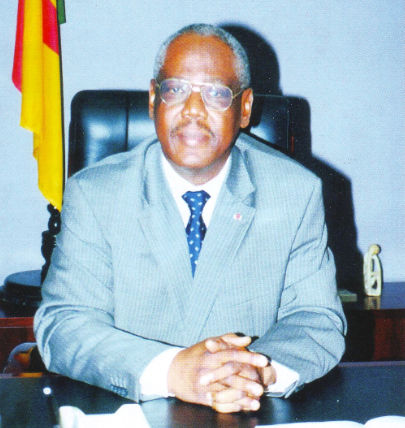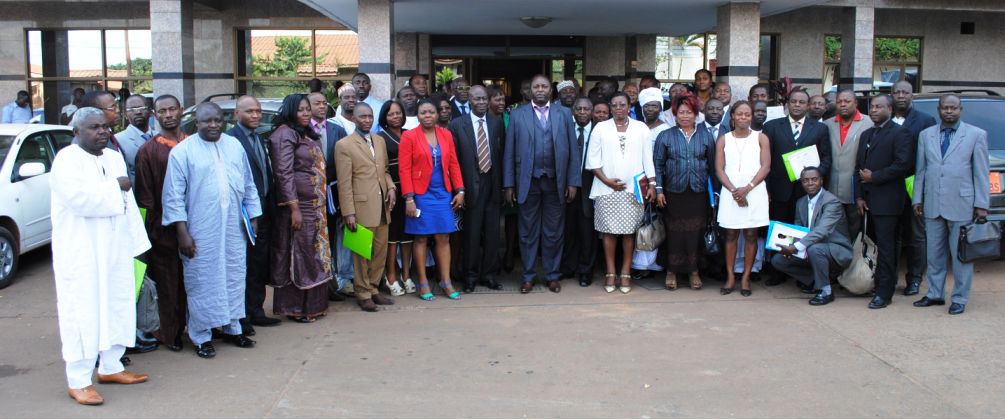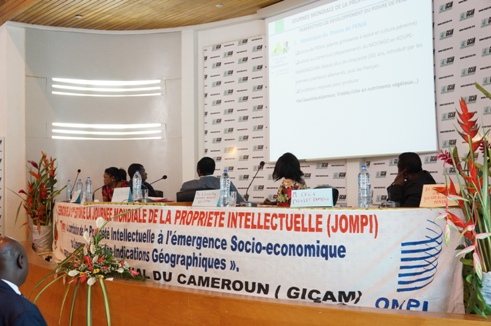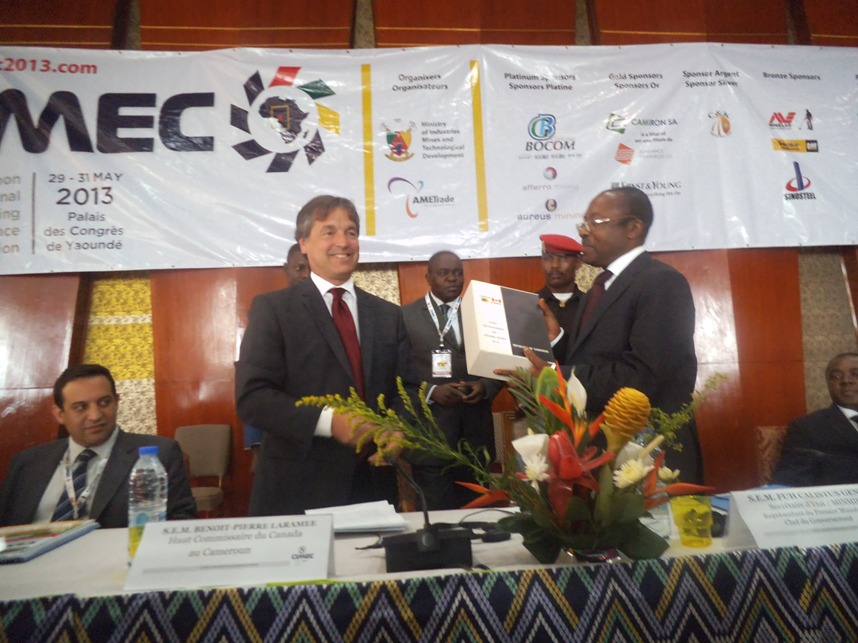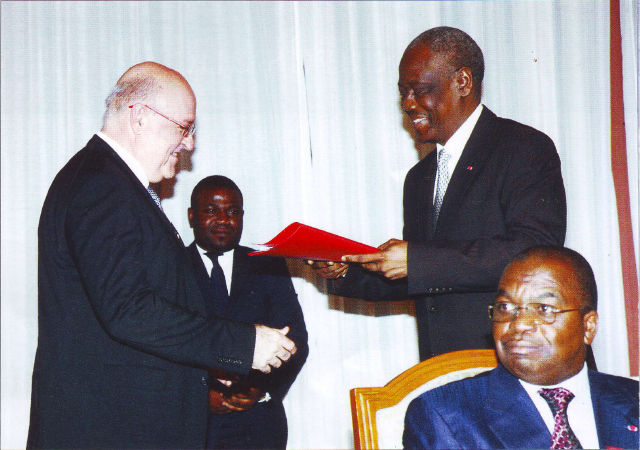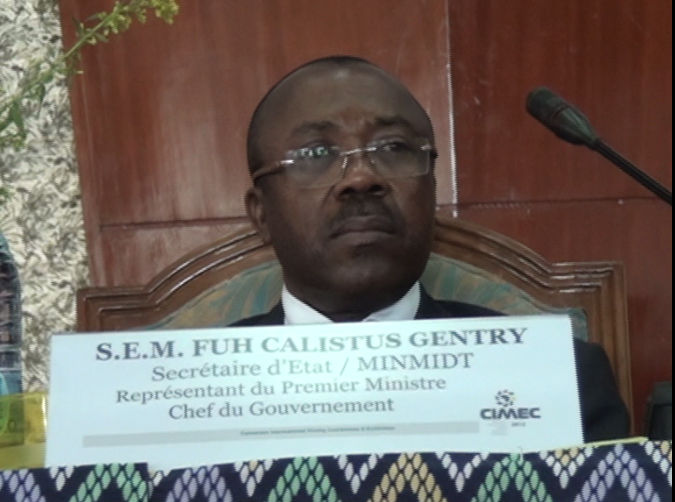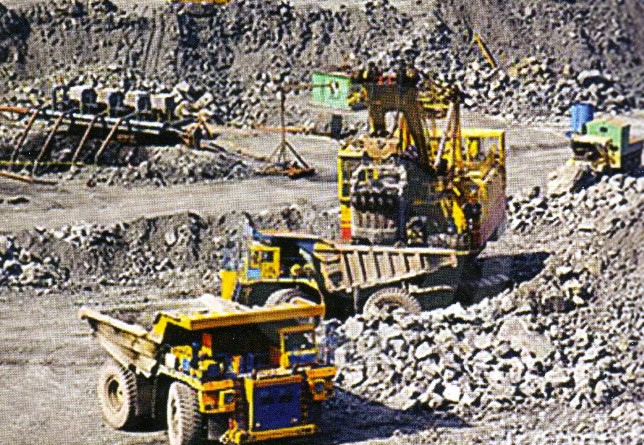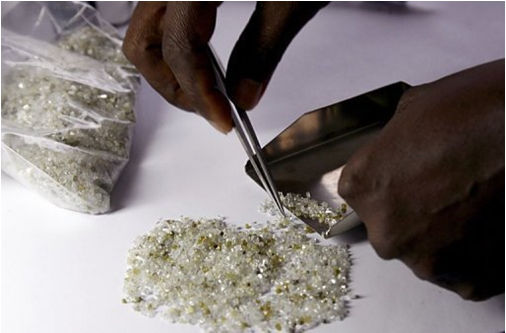MINISTRY OF MINES, INDUSTRY AND
TECHNOLOGICAL DEVELOPMENT
Headquaters:
Ministerial building (immeuble rose) - Yaounde
Tel : +237 681 129 081
E-mail : [email protected]
The news
Diary and ServicesDocuments-DownloadsMultimediaUseful LinksVisites count1966342
Today Yesterday This Week Last Week This Month Last Month All days 3673 4056 10571 1924620 81538 122926 1966342 Guest on lineWe have 40 guests and no members online |
Mining potentialThe mining potential known at 40% of the territory where research was carried out can be schematically presented on the map of mineral resources below: Gains and investment opportunities1. National context, vision and strategy development • Cameroon has significant mineral resources and largely untapped. The contribution of the mining sector (excluding oil) in GDP is still marginal (less than 1%). • However, the country has significant advantages for the development of the mining industry including: - Abundant natural resources; • In addition, there are clear opportunities among which: - Sustained economic growth; • In its long-term vision (2035), Cameroon intends to join the ranks of emerging country with a strong industrial and mining sector. • To accelerate the industrialization, the country has in its Strategy for Growth and Jobs (ECSD), intensify the exploration, exploitation, processing and marketing of mineral resources, attracting in these intensive activities capital and technological investment. • Today, the country has a clear development strategy and ambitious mining. The strategy to develop the sector is divided into four main areas below: • Axis 1: Improving the legal, regulatory and institutional framework (to make it more suited to the demands of the current economic and social context). This requires: - Finalization of the text mining application code; • Axis 2: Development and improvement of the knowledge of mineral potential. This line has the following actions: - The development of reliable maps and geological data (card 1/200000) (updating data mining); • Axis 3: Improving the exploitation of mineral resources It will consist of: - Facilitating the development of synergies between the various stakeholders (forum, a platform of exchange); • Axis 4: Development of mineral resources (processing) It will cover: - Support for the establishment of training facilities in the fields of the mining industry; This framework is contained in Law No. 001 of 16 April 2001 Mining Code, as amended and supplemented by Law No. 2010/011 of 29 July 2010and that promotes international investment through various measures and advocates: 2. Tax and customs benefits Several tax and customs benefits are available to permit holders of exploration and exploitation: RESEARCH PERMIT For these permits, the benefits are: • Customs advantages: - Temporary for equipment as well as professional equipment, machinery, construction vehicles; - Exemption from registration fees for mining operations except those relating to leases and rentals for residential use; LICENCE For these permits, the benefits are: • Customs advantages: - Exemption from taxes and customs duties on equipment, materials, inputs and capital goods needed for production as well as the first batch of spare parts; - The holder of a mining license is subject to a special tax law. However, until the date of first commercial production KIMBERLEY PROCESS
The UN initiated, in January 2003, the Kimberly Process (KP). Since then, 76 countries, representing 99.8 % of the world production of rough diamonds, take part in the process.
It is an international observatory whose objective is to contain the infiltration of blood diamonds.
The Kimberly Process is a veritable world network for preventing conflicts and fighting against rebellions, by exfiltrating blood diamonds. The Kimberly Process promotes supervised and legal diamond mining and trade.
The purpose of the Kimberly Process is to:
The Kimberly Process translates government’s strong political good-will and commitment to conform to the principles and requirements of the Kimberly Process, as well as to observe international rules as regards transparency in the extractive industries.
The situation of Cameroon is as follows:
N.B: 5 carats = 1 gramme
USEFUL FACTS ABOUT THE PROJECT The stakes of the Kimberly Process are:
The challenges of the Kimberly Process are:
The prospects of the Kimberly Process are:
Geophysical and geological dataThe President of the Republic wishes that an ambitious policy should support the take off of the mining extractive industry, by elaborating strategies that can lead to a globally competitive,strong,efficient mining sector, capable of creating wealth and value.This vision of the Head of State is based on the eloquence of Cameroon’smineral potential. It is estimated that the information on the soil and sub-soil are known at about 40%. It is not superfluous to note that this potential will be even more important if the prospectionwork should cover a greater part of the territory.Because they are creators of wealth and values, mining projects are bearers of a lot of hope and are de factoleading projectsfor the revival of economic growth geared towards making Cameroon an emerging countryby the year 2035. Indeed, any mining exploitation generates direct or indirect revenues to the State. Direct revenues are related to the various taxes such as corporate tax, licence, VAT, surfacearea,ad valoremand customs taxes, etc. Indirect revenues are mainly due to the fact that the State has the possibility to have a participation in the exploitation of at most 10%. In addition, the services related to the exploitation in terms of the supply of spare parts and various works also yieldrevenue related to the taxation of these services. The cumulative contribution of these various revenuesconstitutes a significant increase in expected State revenue.The reform of the mining sector initiated by the MINMEE, in collaboration with the World Bank has led to the enactment of Law No. 001 of 16 April 2001 on the Mining Code and Decree No. 2002/648 PM of 26 March 2002 to lay downits implementation rules.This Law was recently amended and supplemented by that No. 2010/011 of 29 July 2010.
|
Copyright 2013. All rights reserved. Designed, managed and moderated by CITYEYE



